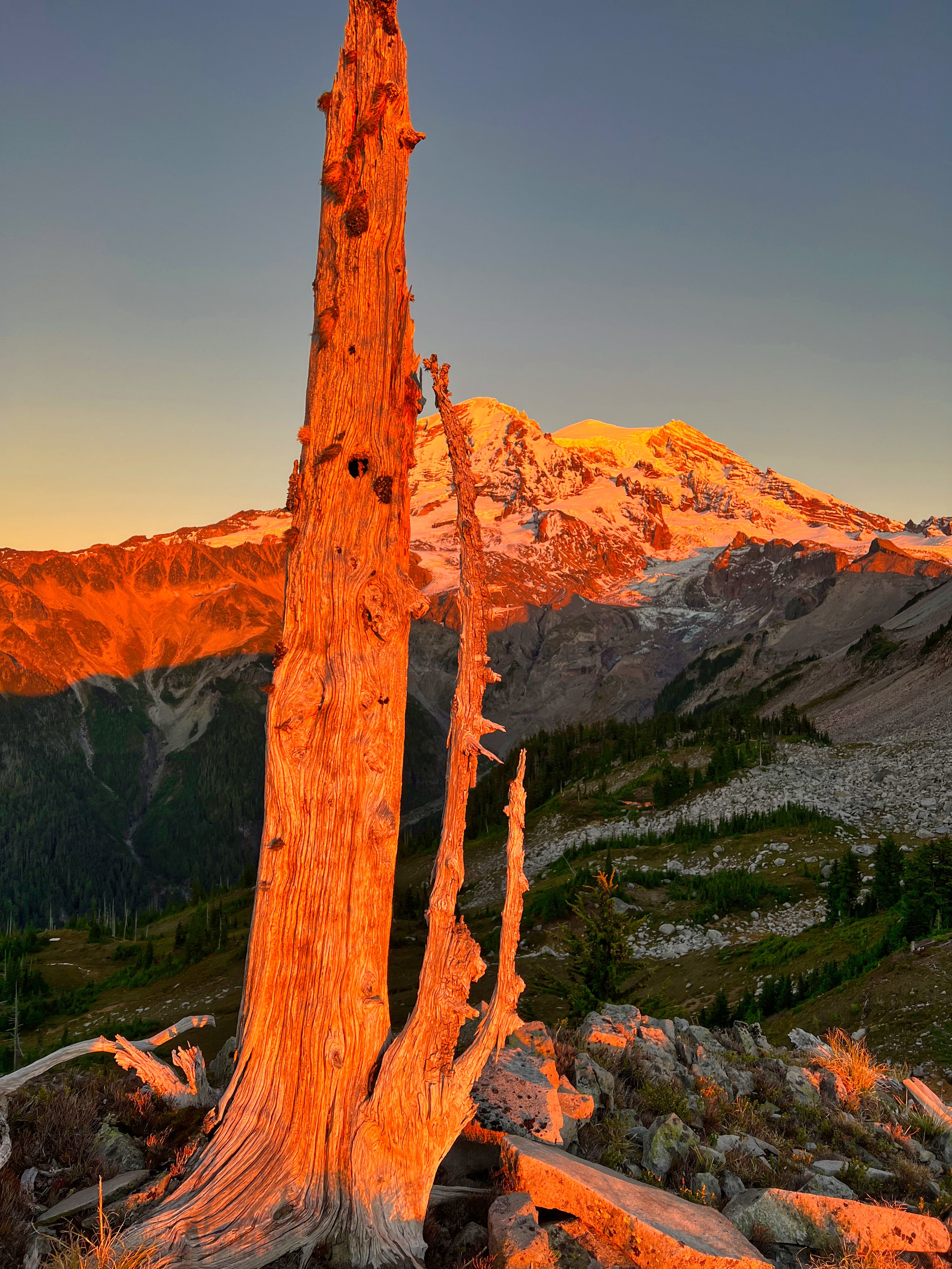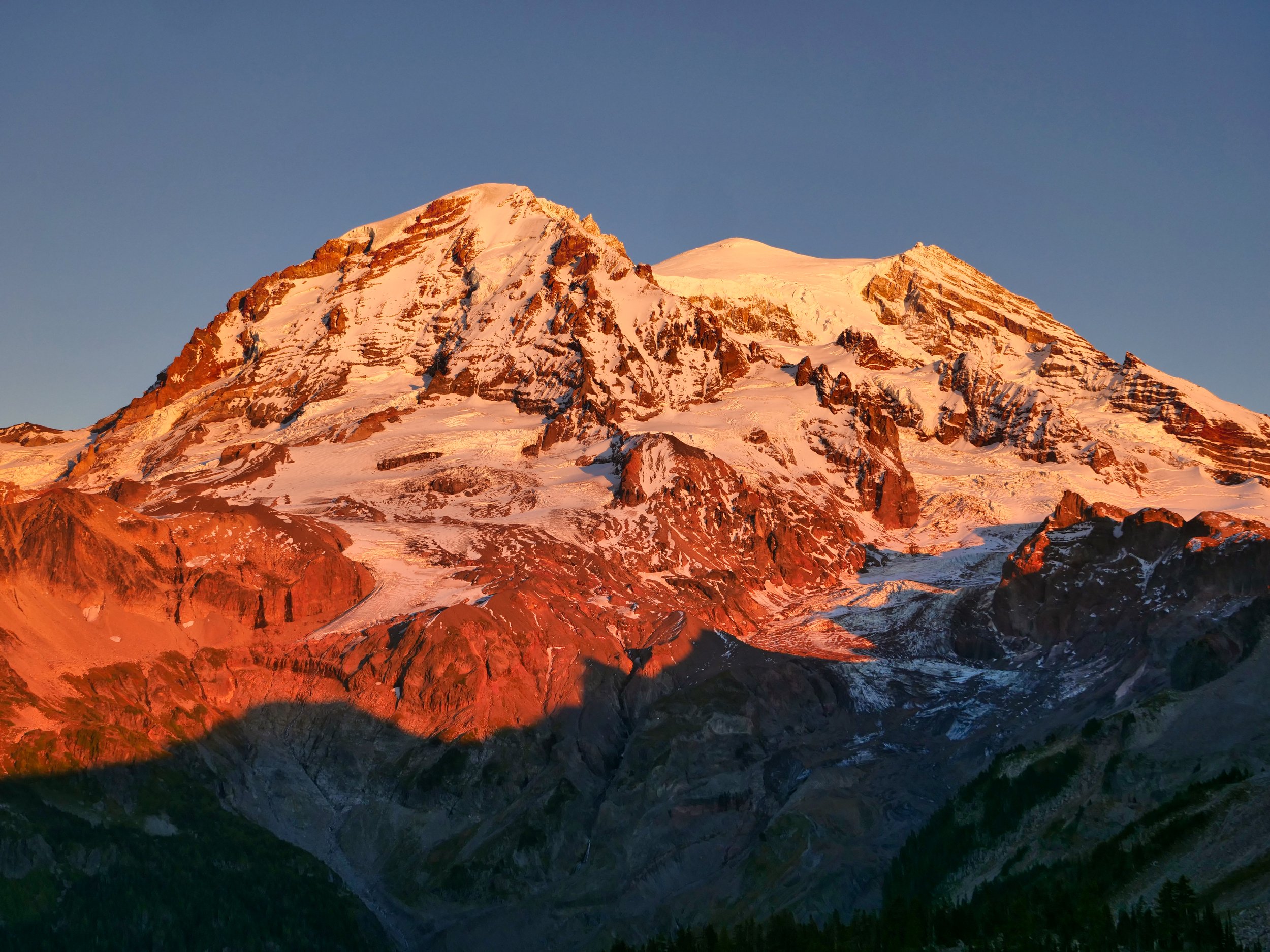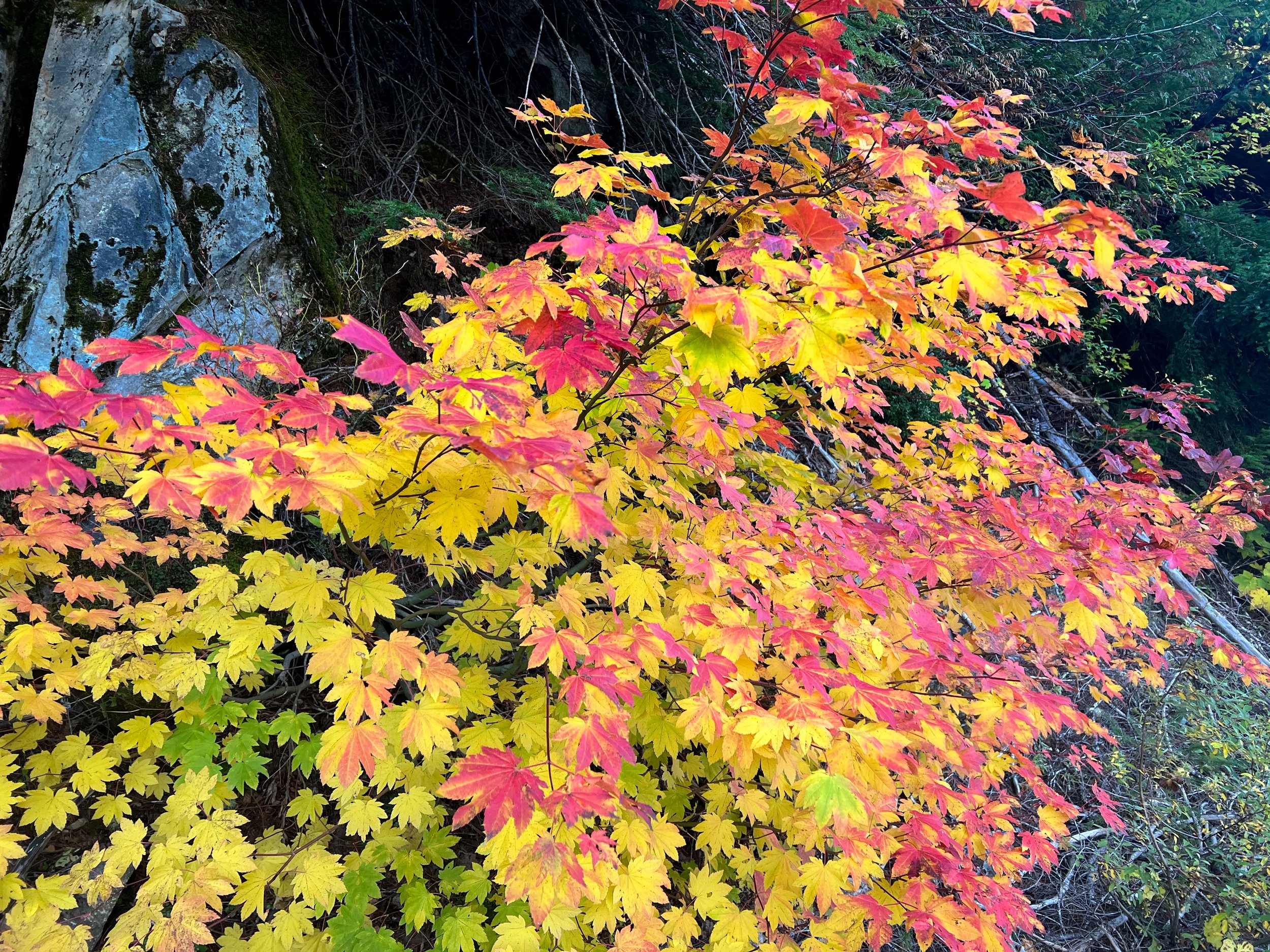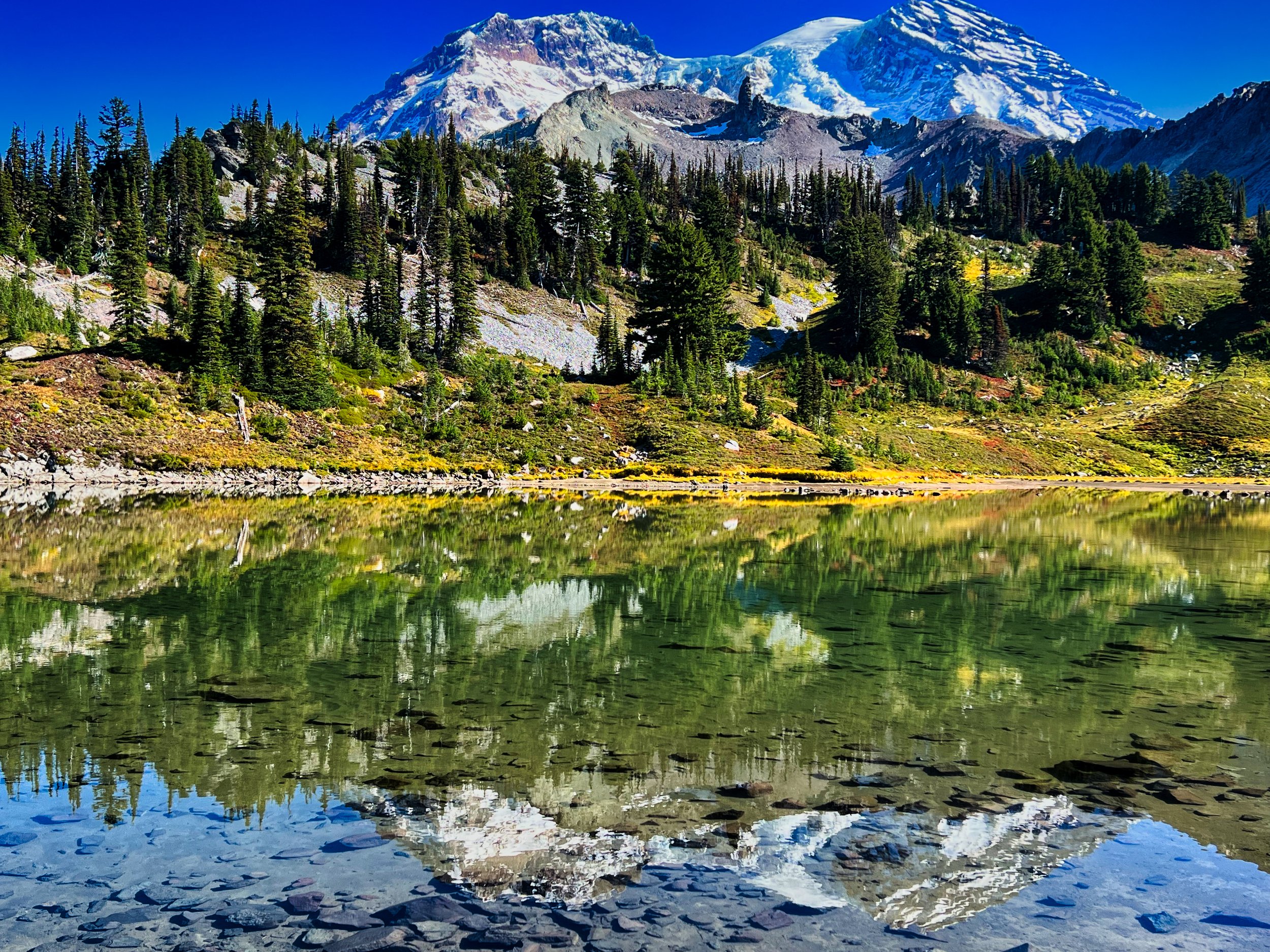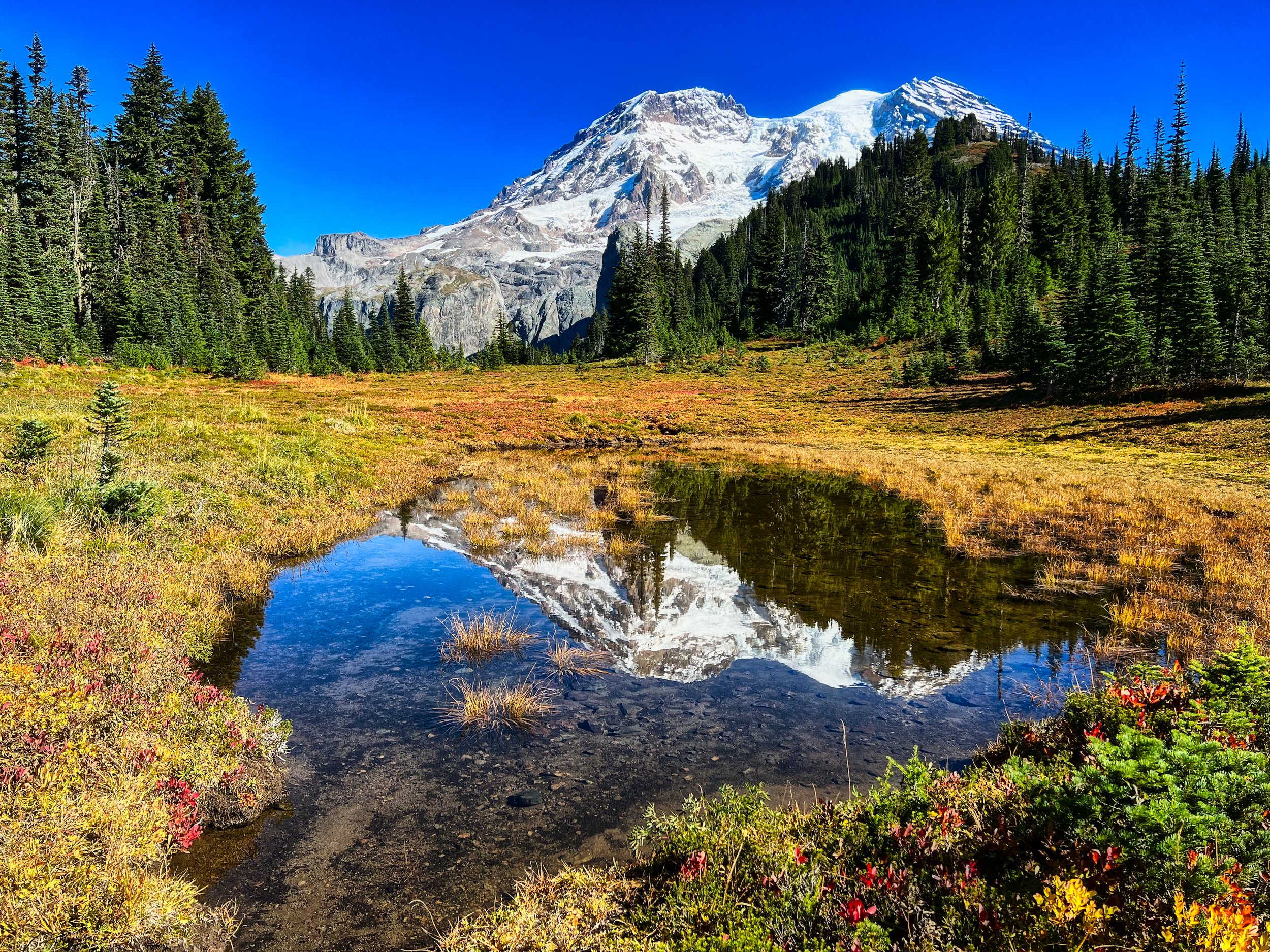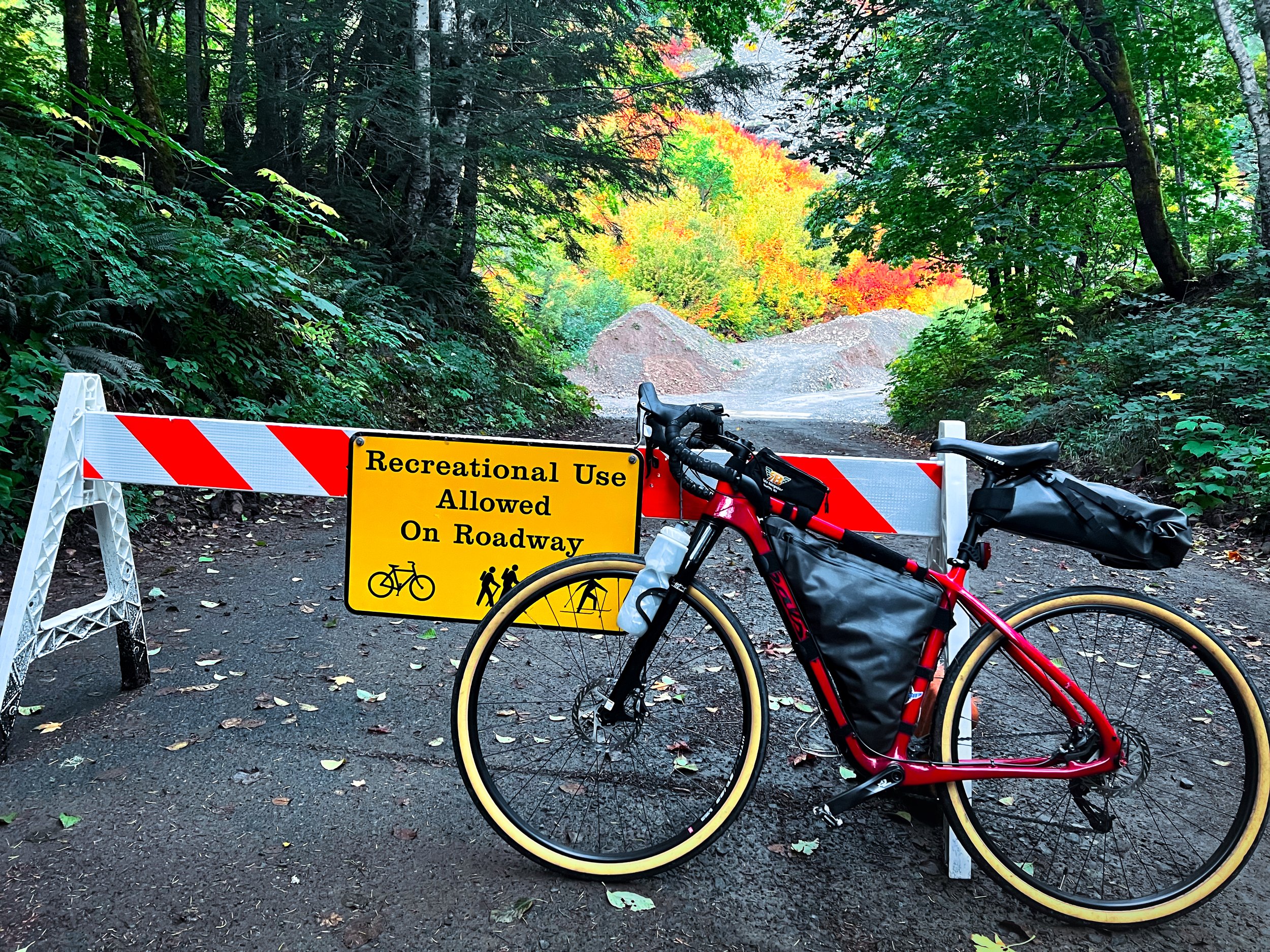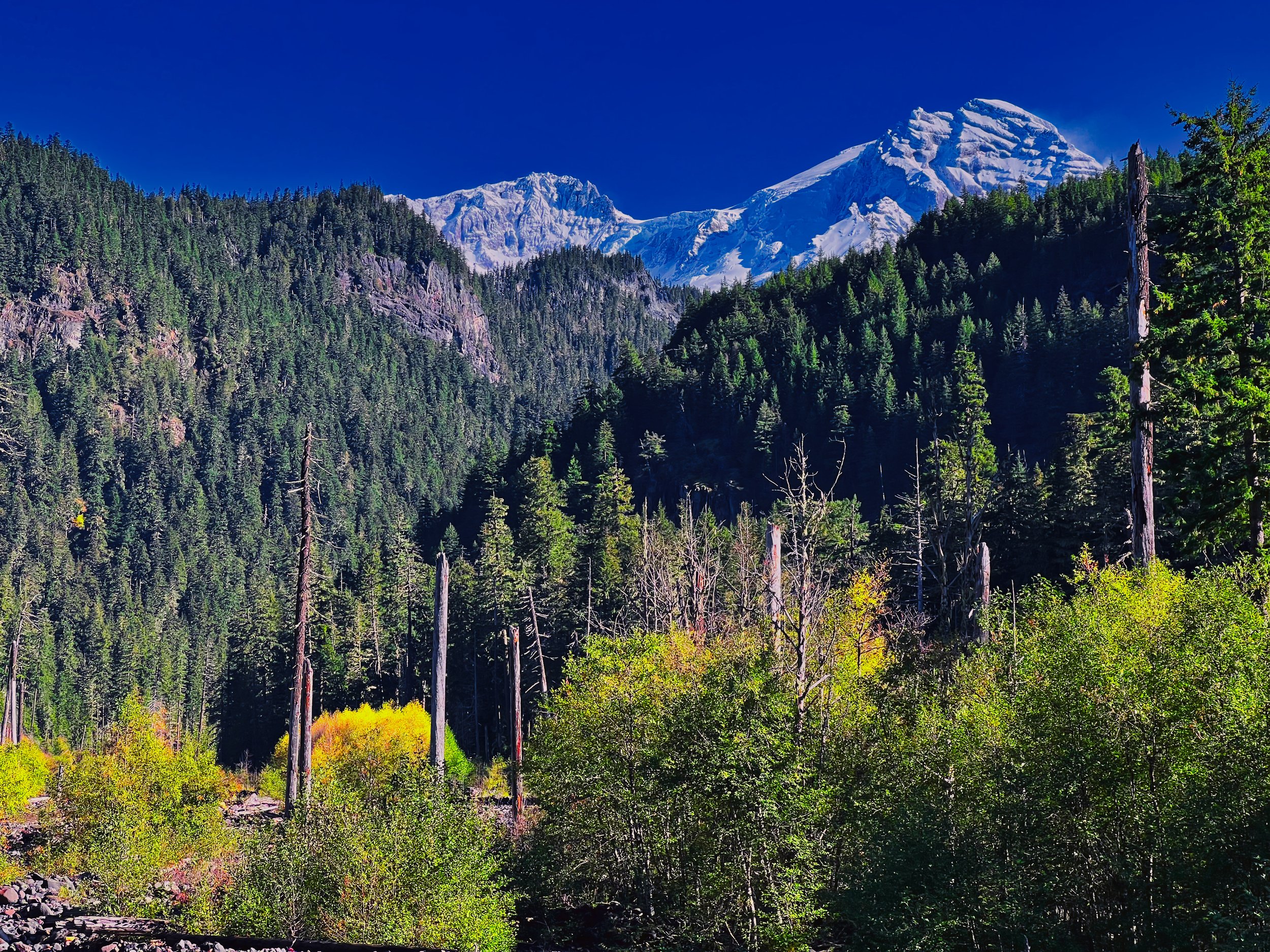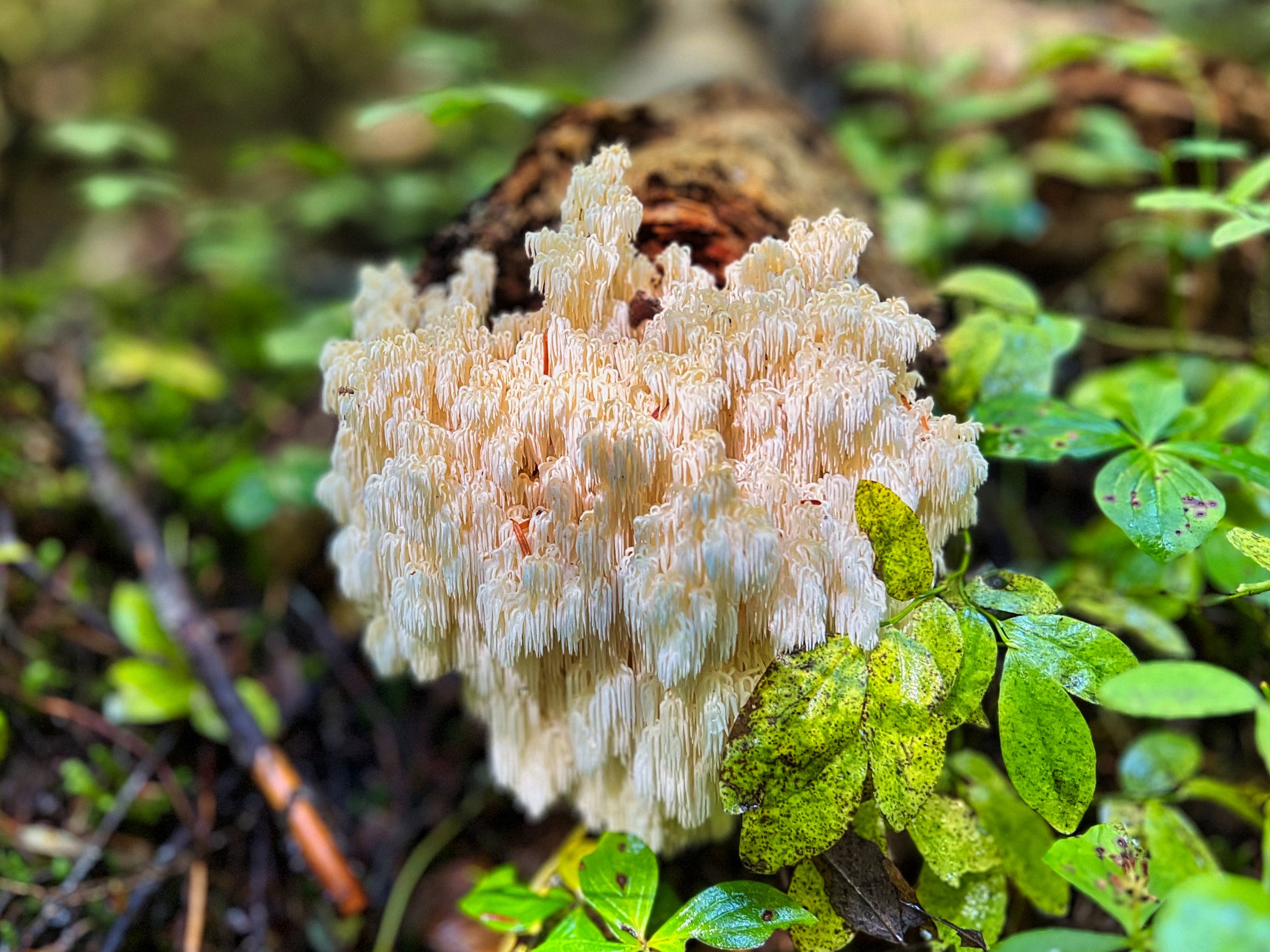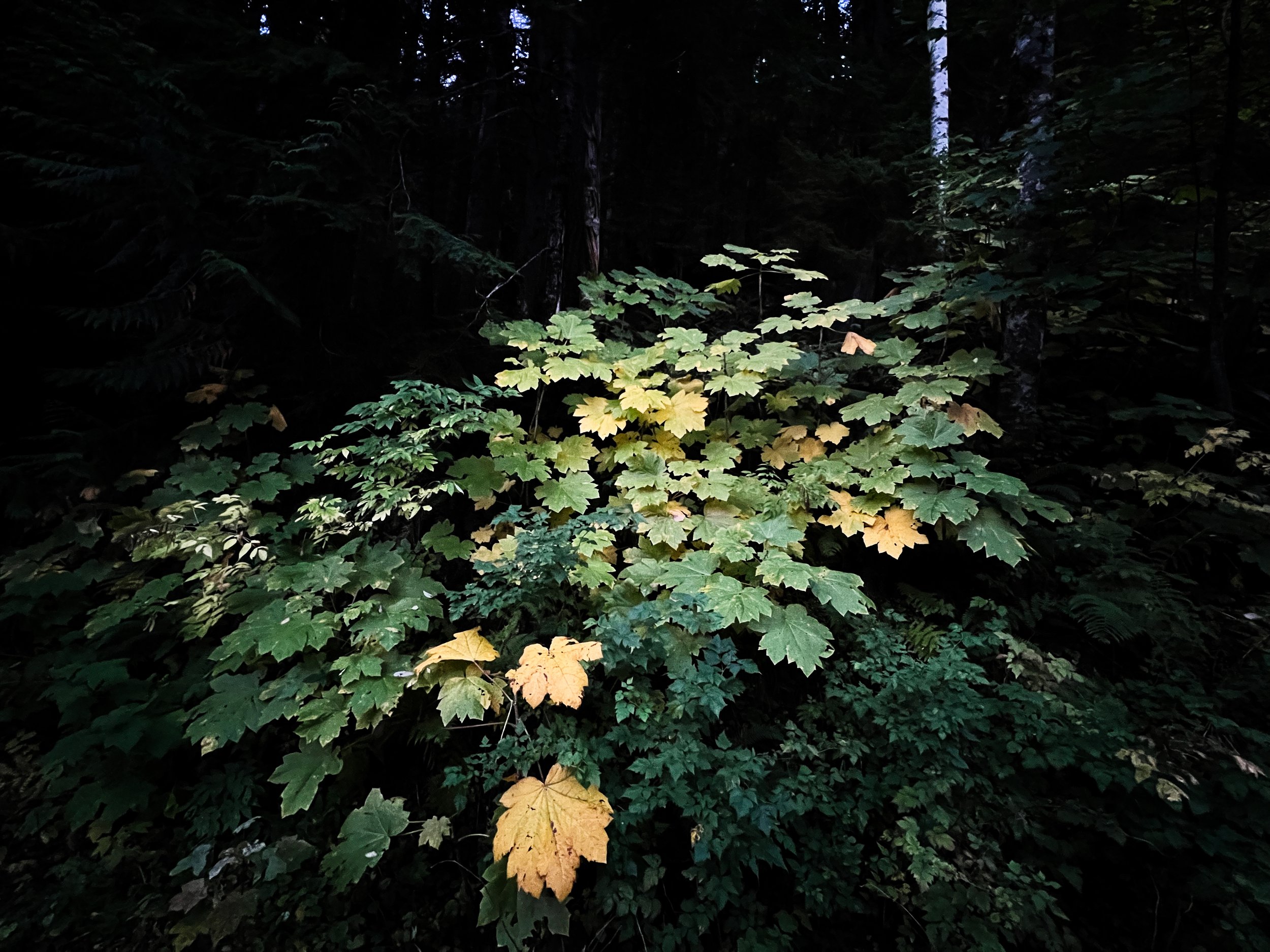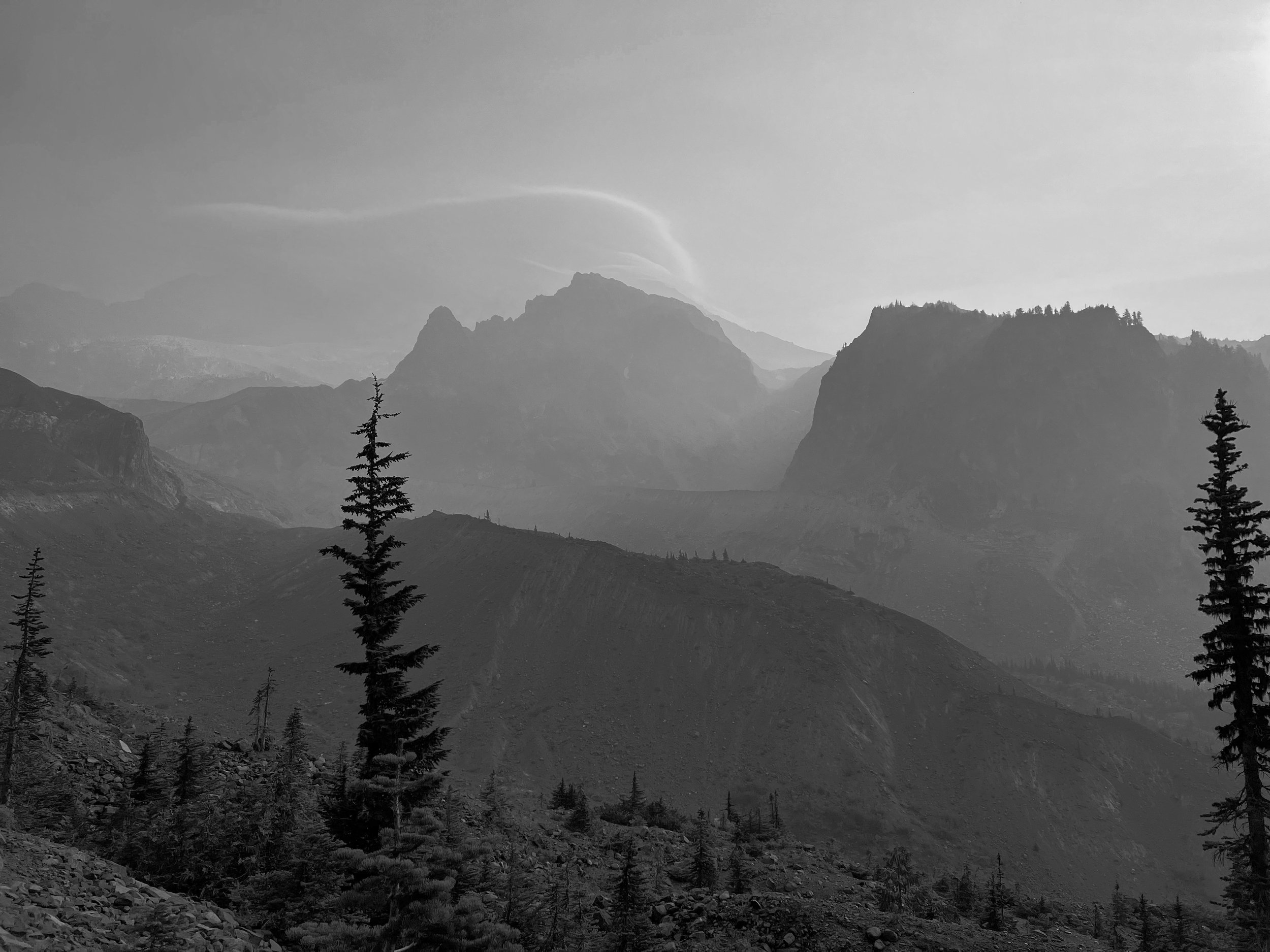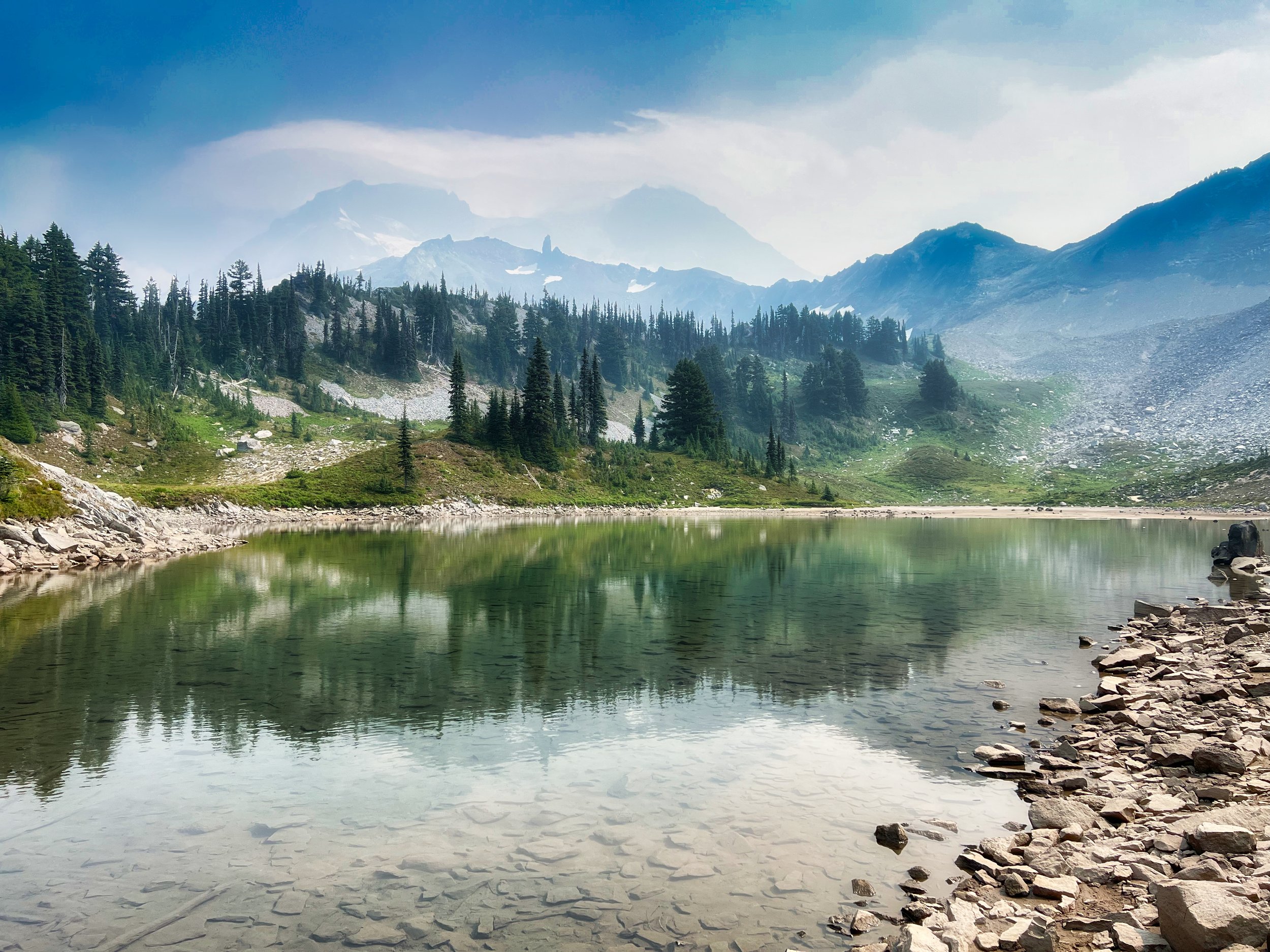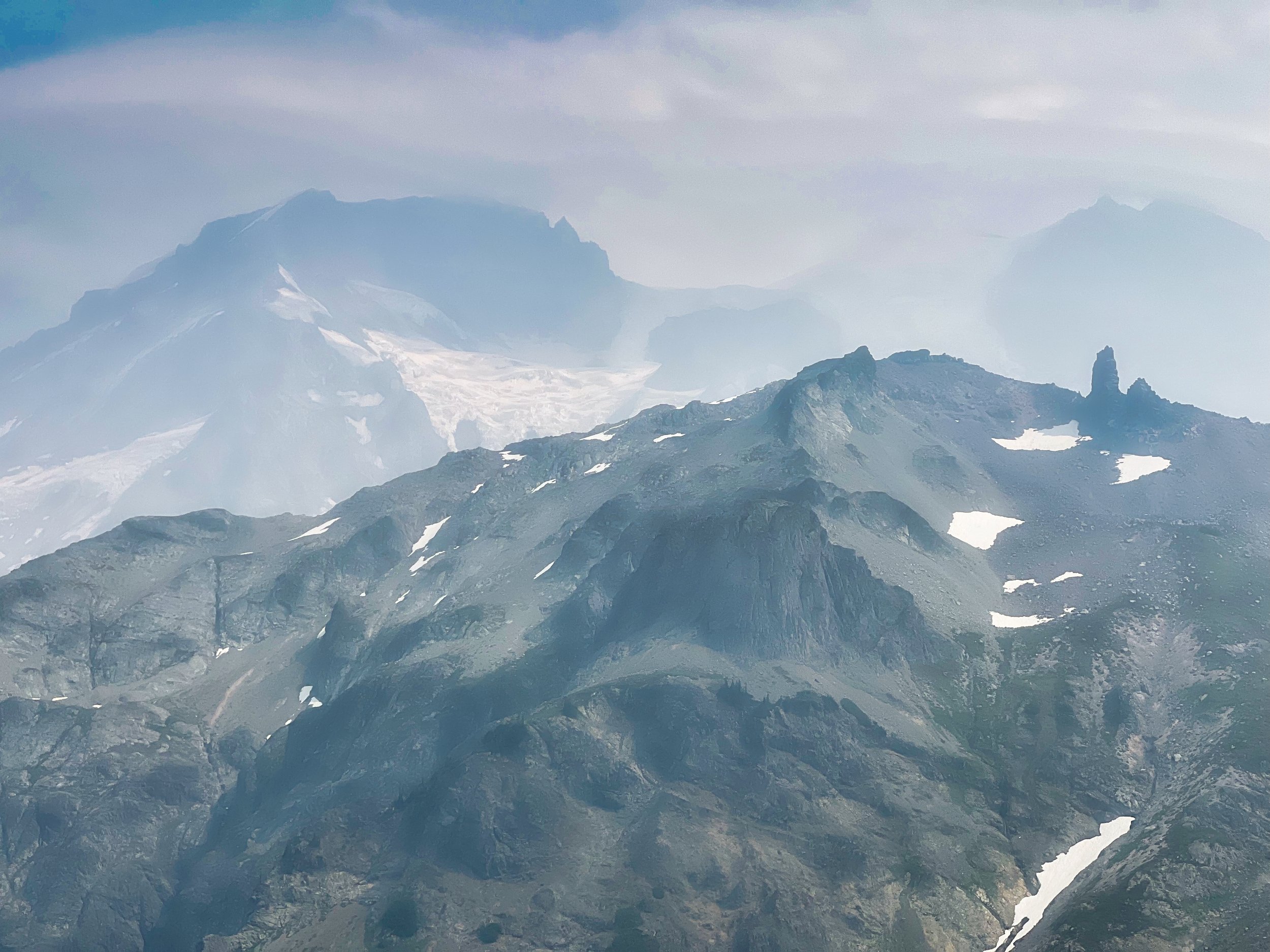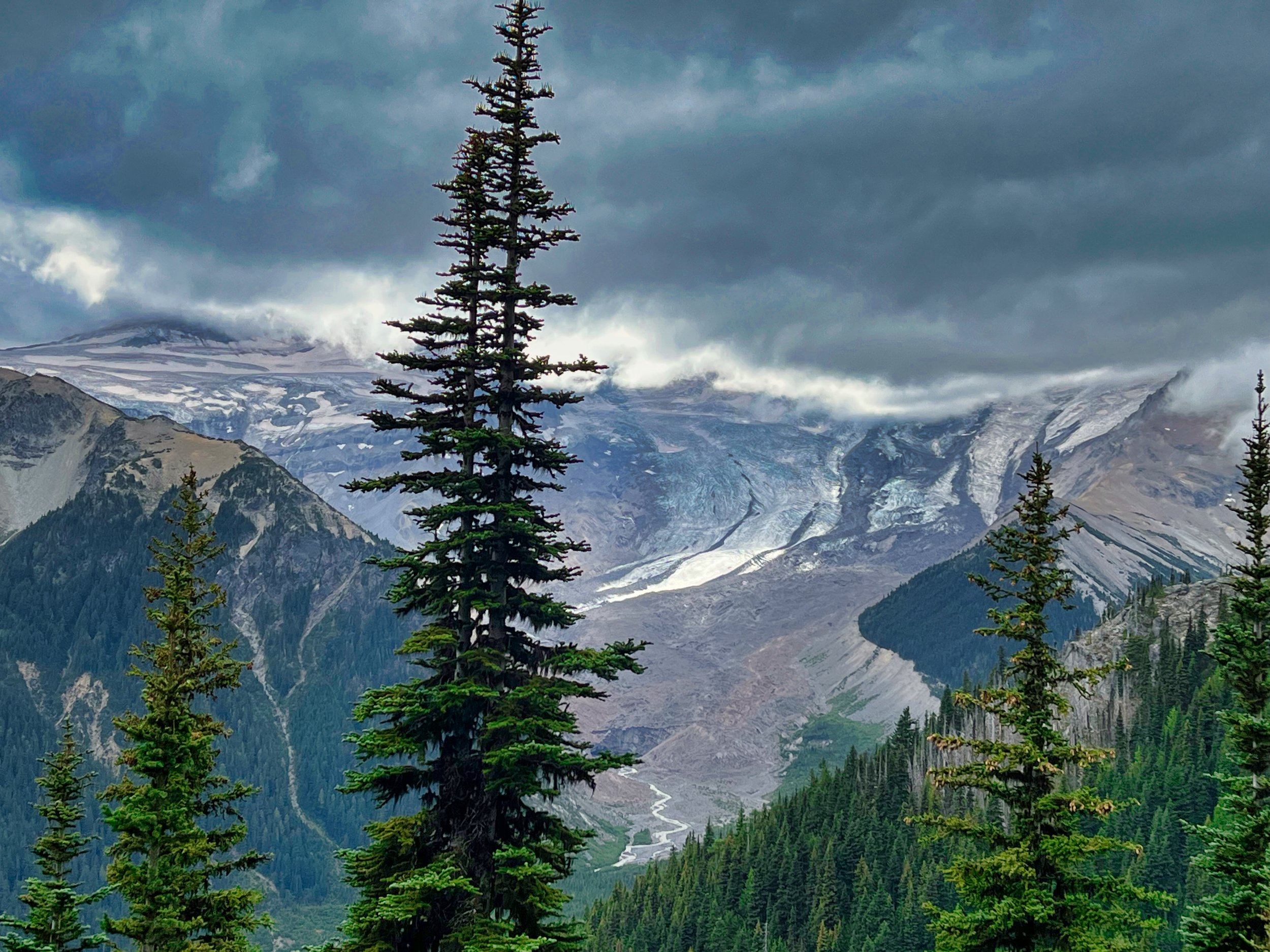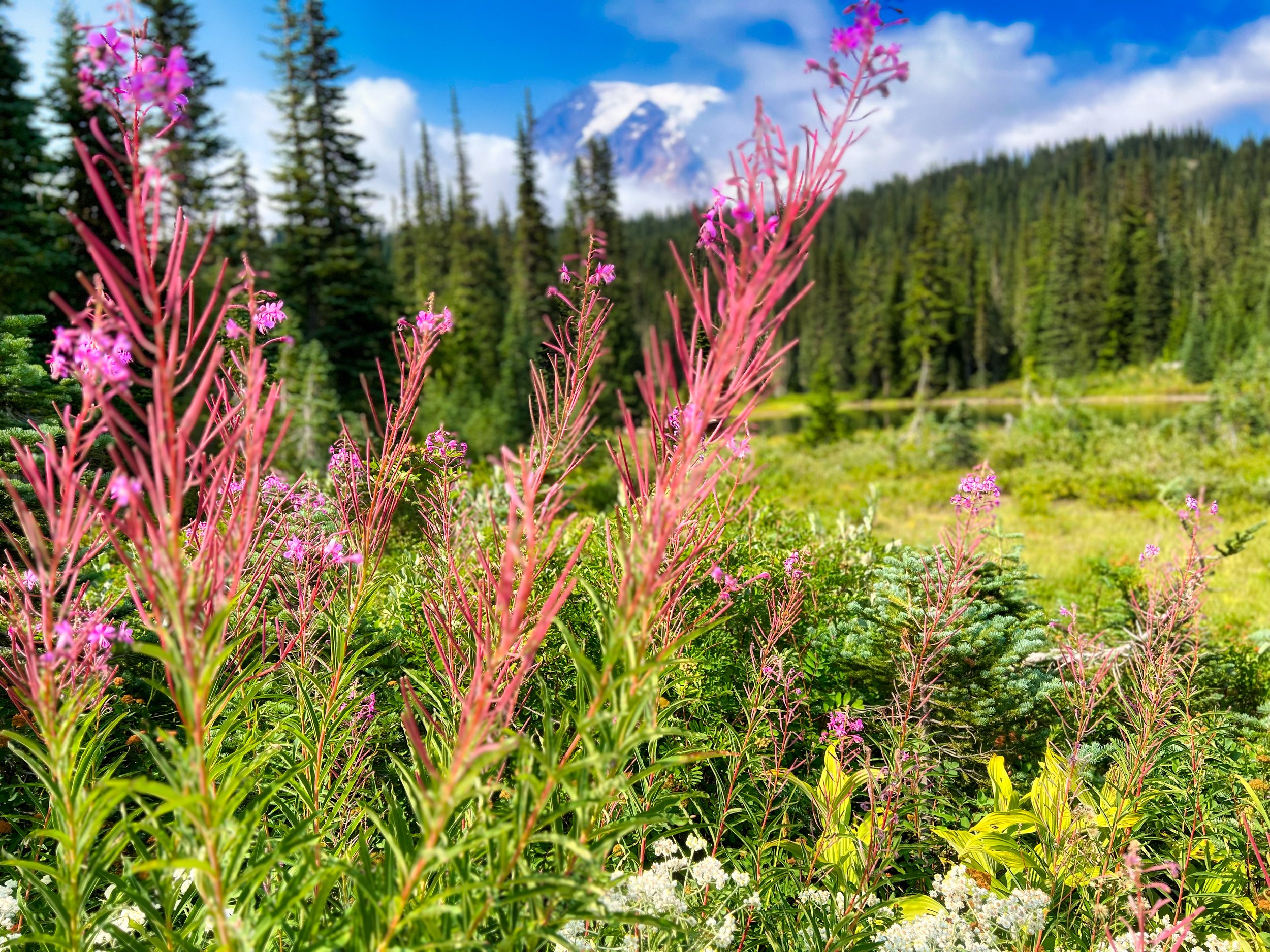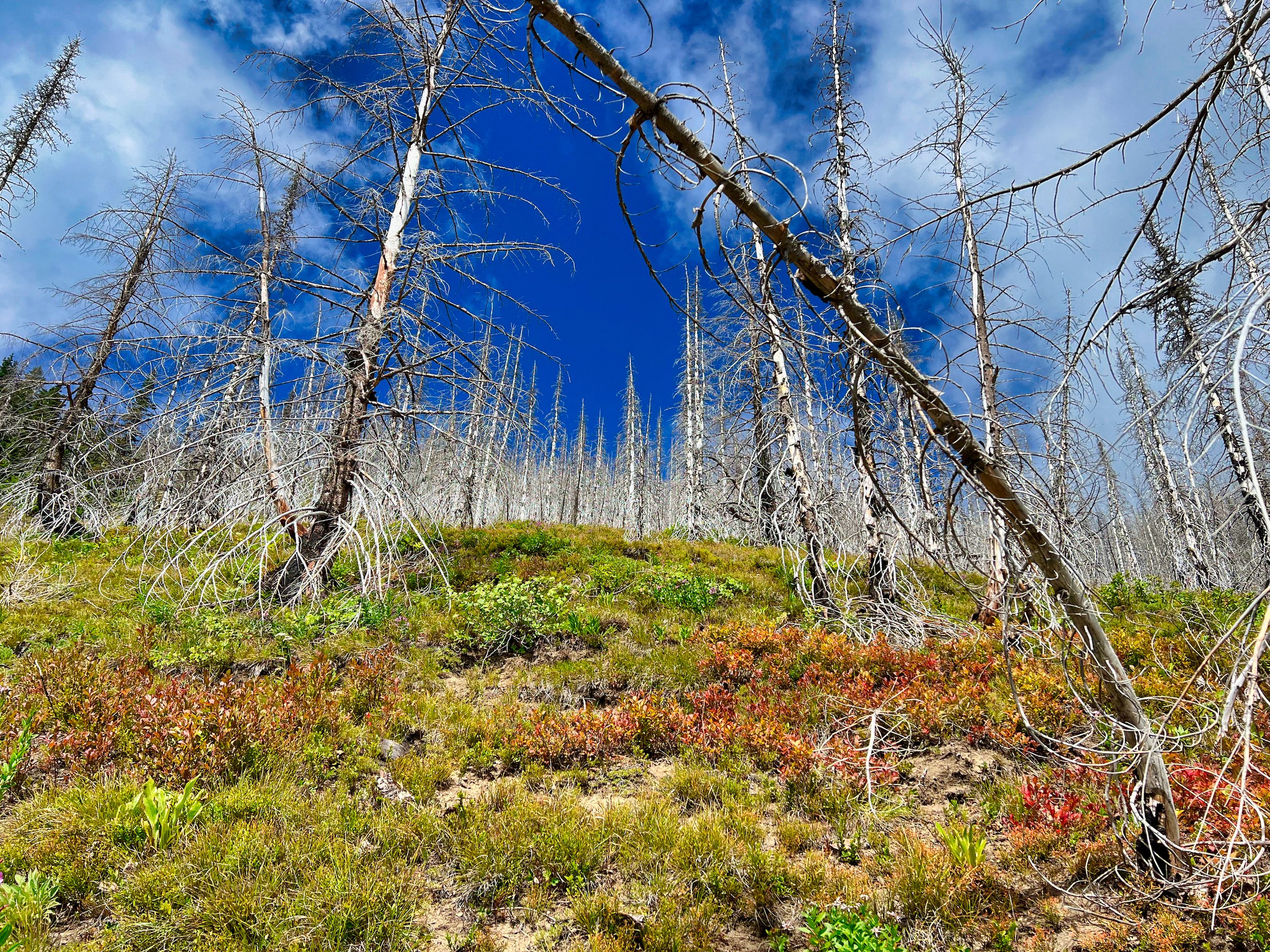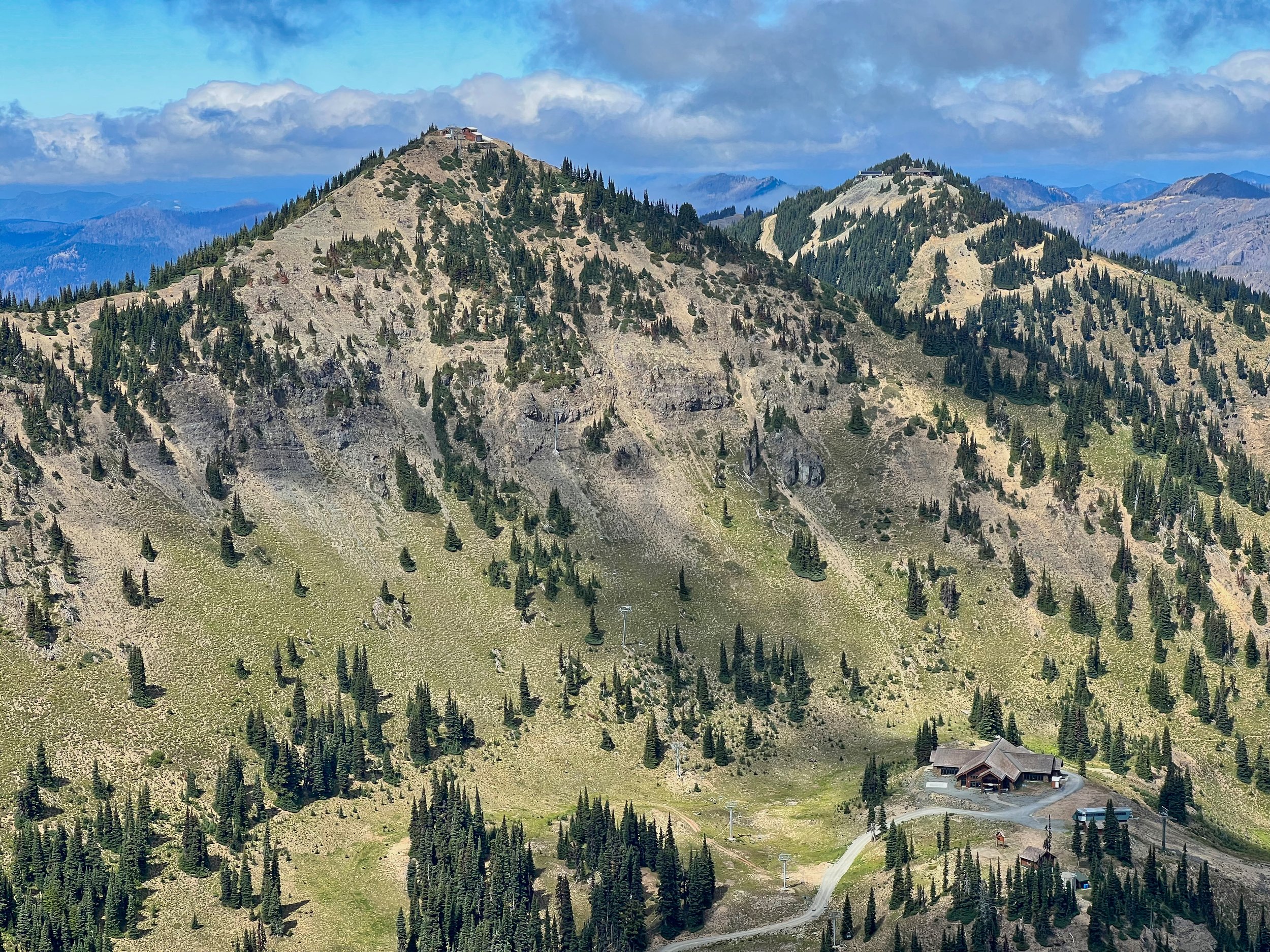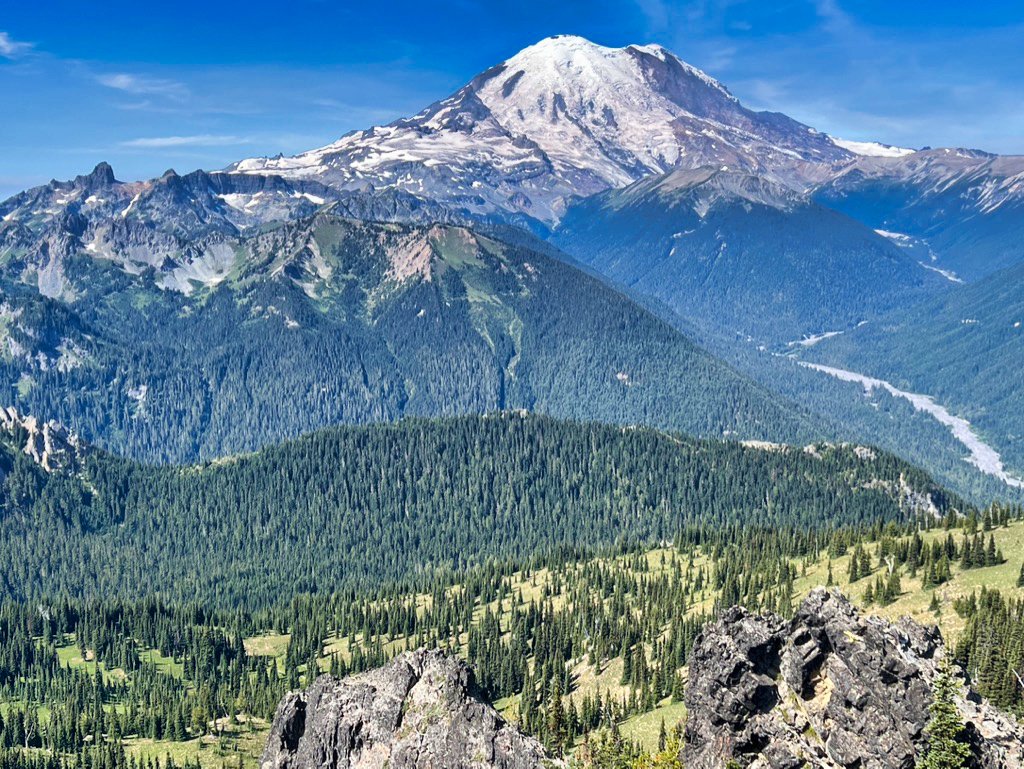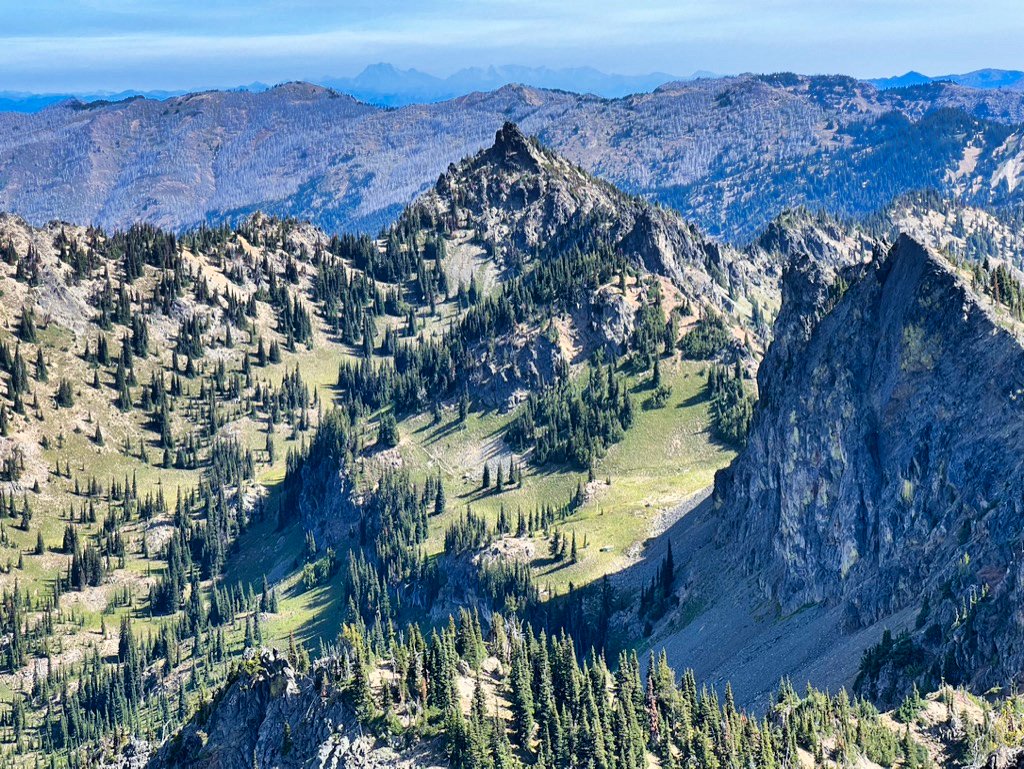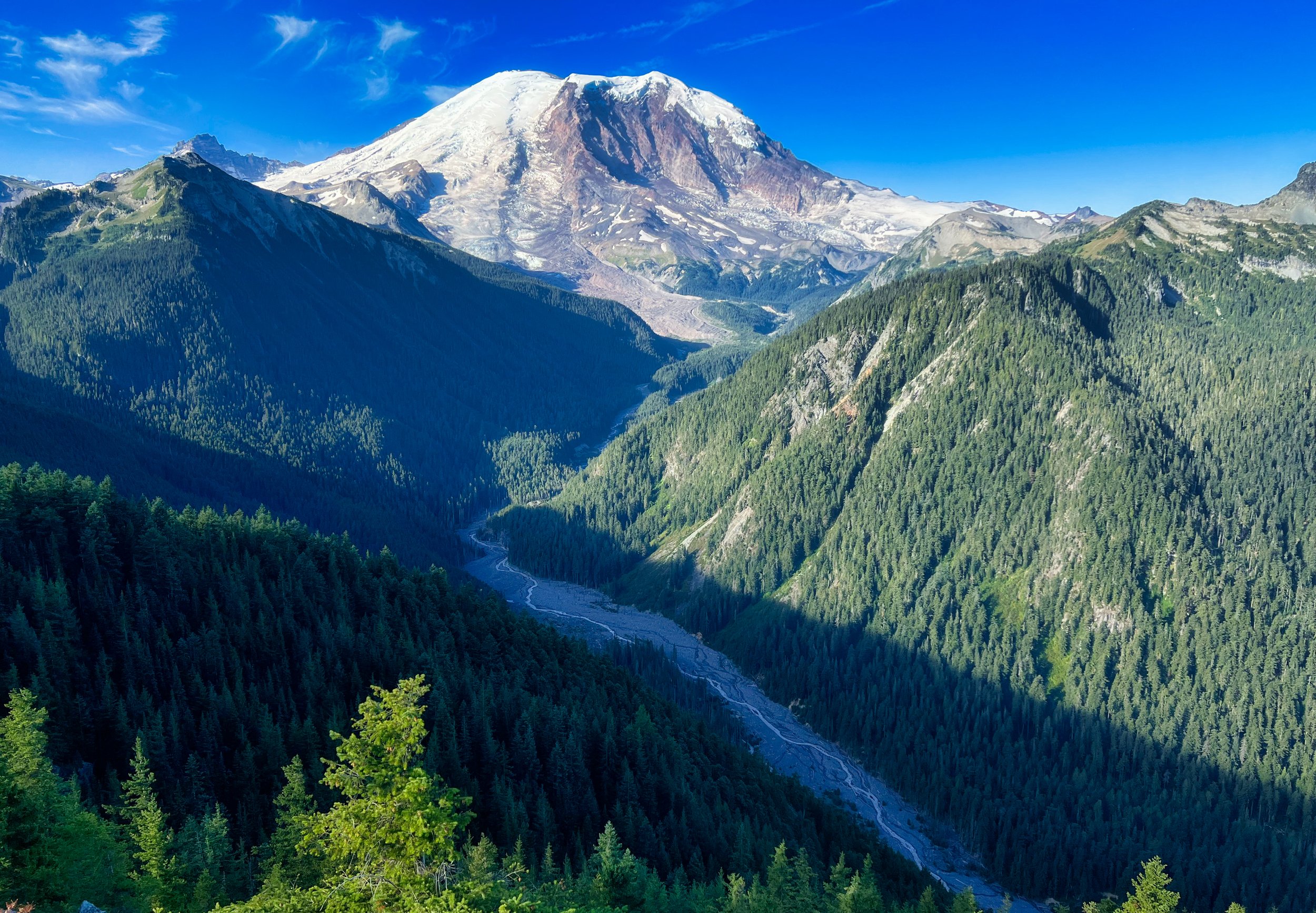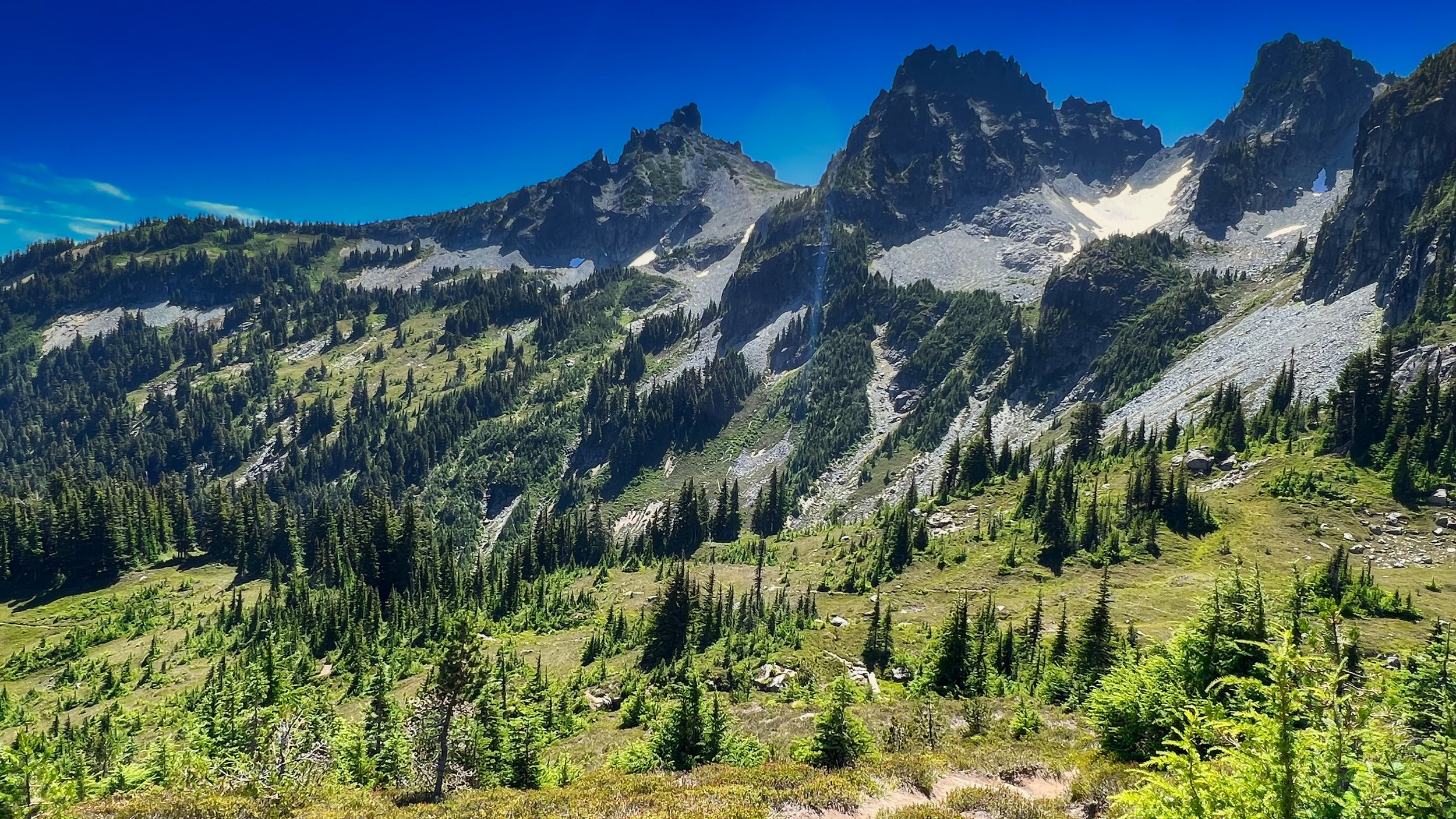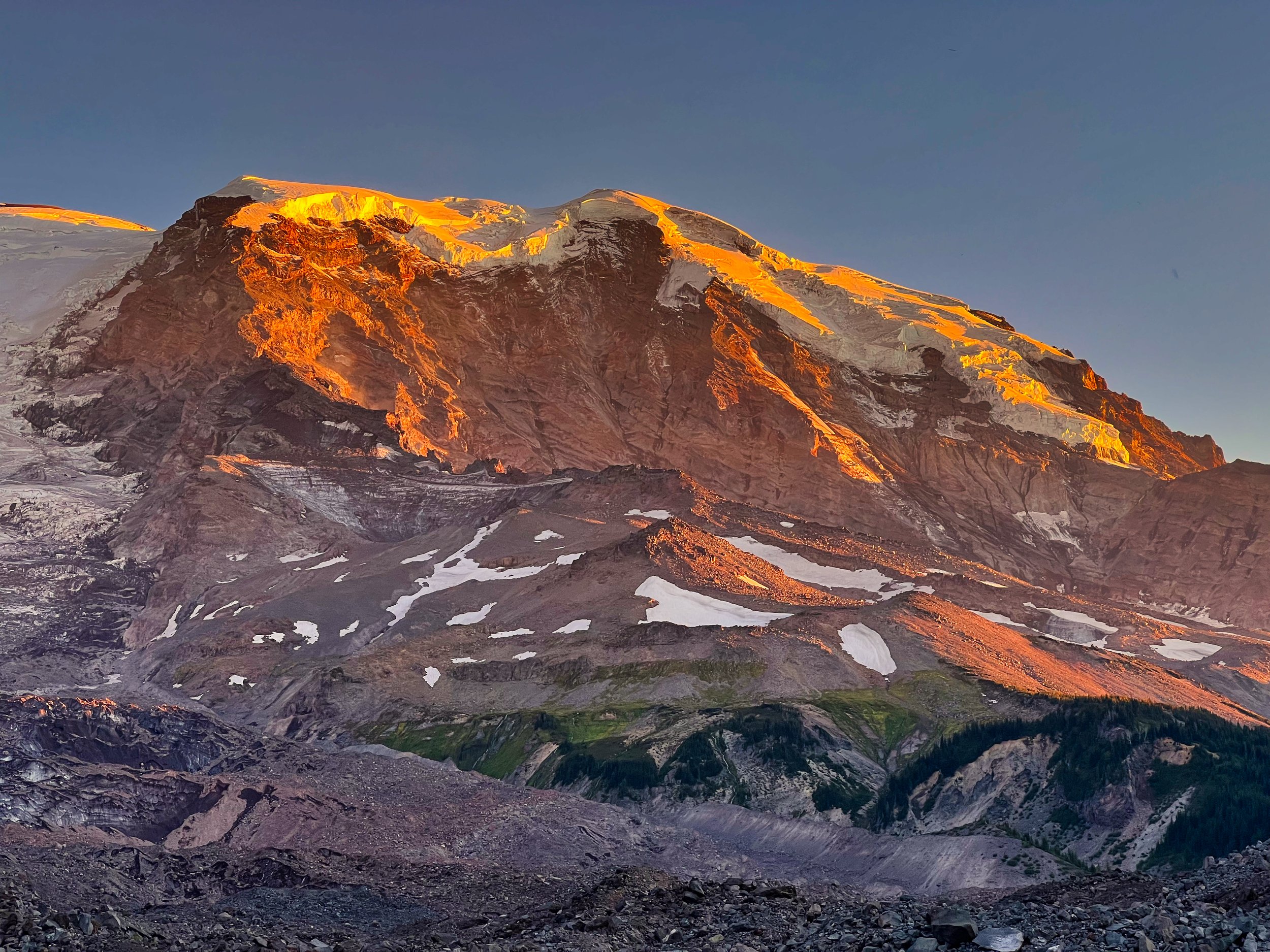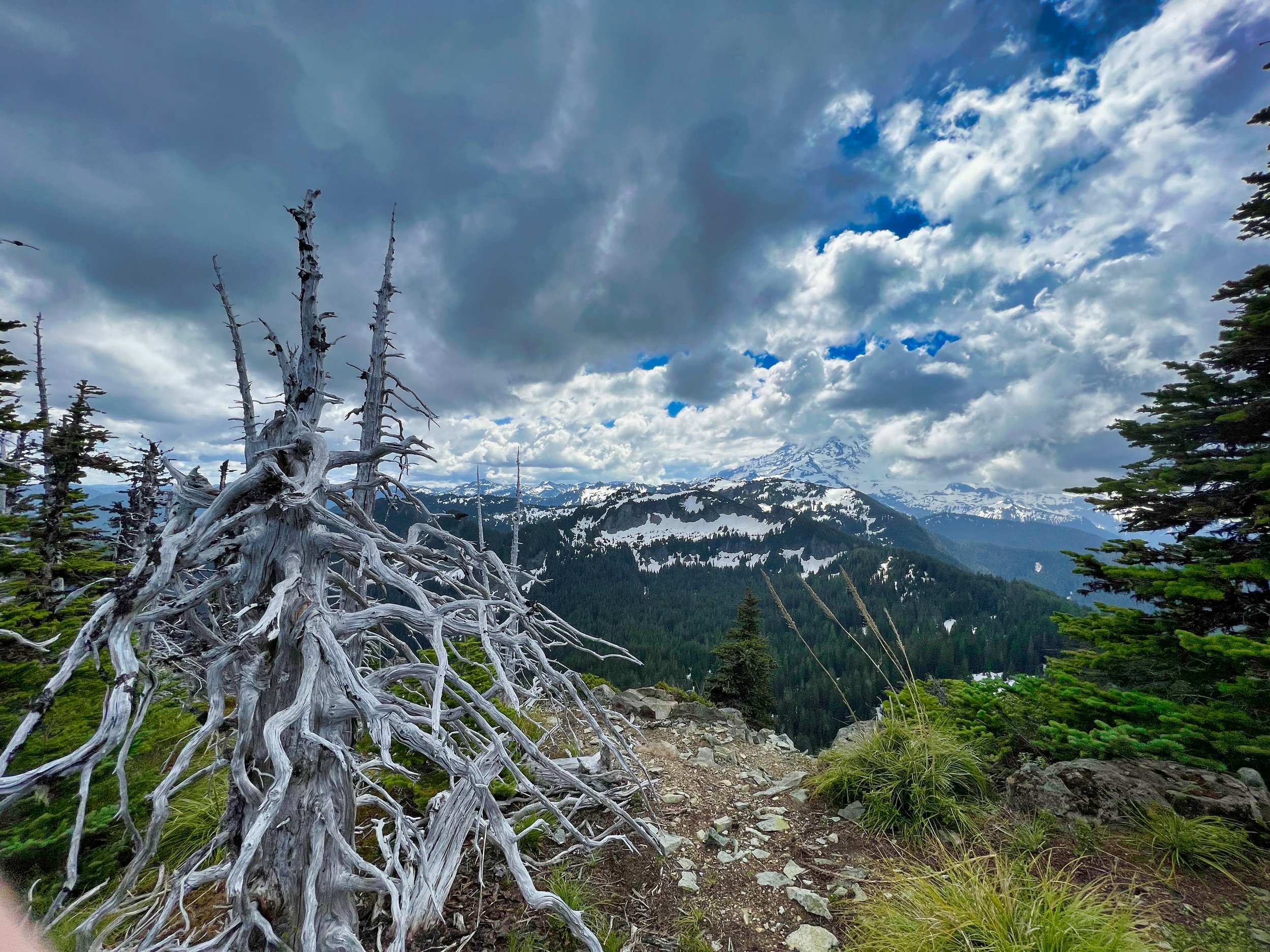Day 1 had me 47 miles into the hike with 12,500 feet of elevation gain. Day 2 would be longer with essentially the same elevation gain, mitigated somewhat by the last 30 miles abating a bit. As the skies got lighter I could see that there was no clearing; the cloud deck was low and mist was in the air. At least the smoke had cleared out. I was anticipating 4 major climbs to finish off the trip, and I arrived at the top of the first one (Mystic Pass at 6000’) feeling OK. I didn’t have the prior day’s spring and spunk but my legs were still in the fight and I was able to trot the downhills without quivering thighs. I breezed through Mystic Lake, around the Winthrop Glacier and saw an elusive Marten on my climb to Skyscraper Pass, the second climb of the day. In the forefront of my mind were the time milestones, and I was thinking I was maybe 2 hours behind where I should have been. I took a long break at White River Campground, the other spot that I use for a typical 3 day, and launched into the unknown. On the trail to Summerland I laid down and took a 30 minute nap, feeling much better for the short rest as I aimed for the highest point on the trail, Panhandle Gap at 6800 feet. But what’s that I’m seeing in my headlight as I’m hiking?….looks like big dust particles…or light rain. I am always assessing conditions, not just external but how my body is holding up. As the rain increased in intensity there was more assessing. As the winds picked up above Summerland and sideways mist was hitting my face there was more assessing. A decision had to be made, do I commit to Panhandle Gap and the exposed Ohanapecosh Park transit? Now, I was not going “stupid light”, I had minimal but effective kit (total carried weight including food and water was about 12 pounds), and I was confident in my choices. Bottom line though, I deemed it prudent not to continue at that point, and knew my best place to shelter was below Panhandle Gap by the green tarn. Abandoning my 48 hour quest, I laid out the bivy on a durable, sandy area near the tarn. By the time I was tucked inside the rain and wind had intensified. Problem was, I had to keep the bivy closed because of the wind driven rain, but the condensation buildup inside became its own problem. I had all my clothes on and was able to maintain minimal heat throughout the night, but I was certainly not comfortable. Shifting side to side, occasionally opening up the bivy for ventilation, adjusting the quilt as best I could for drafts, I spent the night snoozing and awaiting morning. Stats for this second day: 29 miles/8300’ elevation gain





